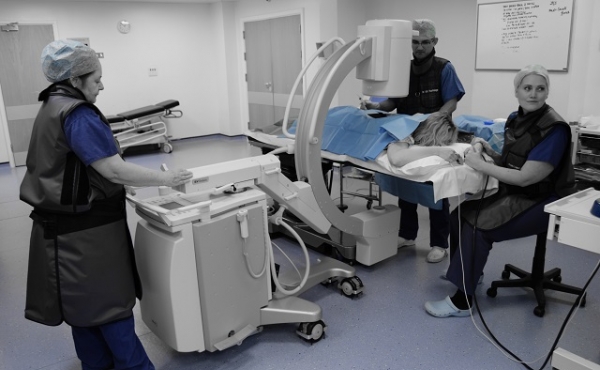FPM concerns regarding new NICE Chronic Pain Guidelines
The Faculty of Pain Medicine notes with significant concern the publication of new National Institute for Health and Care Excellence guidelines on 7 April 2021. This guideline covers the assessment of all chronic pain (chronic primary pain, chronic secondary pain, or both) and management of chronic primary pain in people aged 16 years and over.
The guidelines are based on the ICD-11 Classification of Disease and state:
- Chronic primary pain is pain with no clear underlying cause or pain (or its impact) which is out of proportion to any observable injury or disease.
- Chronic secondary pain exists when an underlying condition adequately accounts for the pain or its impact.
- Chronic primary pain and chronic secondary pain can coexist.
The FPM understands the challenges of producing guidelines that cover all aspects of assessment and management of a broad spectrum of complex and diverse conditions that lead to pain. The FPM would like to thank the National Institute for Health Care and Excellence for their endeavours.
The FPM is pleased that the Guidelines support a patient centred assessment and encourages clinicians to recognise that chronic primary pain can coexist with chronic secondary pain. The FPM also supports this broad biopsychosocial assessment across all pain conditions, taking into account the patient’s own perspective.
The FPM however remains concerned that the way in which ICD-11 classification has been used does not reflect clinical practice or the current research base. The guidelines state chronic primary pain has no clear underlying condition and that the mechanisms underlying it are only partially understood. This does not mean that this is a single entity and current understanding needs to develop to gain a better understanding of the underlying mechanisms. They are also likely to be influenced by the unique biopsychosocial makeup of the patient. The ICD-11 classification allows for subdivisions of chronic primary pain when possible into broad categories (e.g. chronic primary visceral pain) thus emphasising that this is not a single entity but a classification that provides recognition of the pain despite the underlying mechanisms being only partially understood.
There is also a real risk that those classed as having “chronic primary pain” will include large numbers of people with a different, ultimately identifiable cause of pain, to whom this guidance should not apply. There is also the risk that patients who are diagnosed with chronic primary pain, and who subsequently develop secondary pain are neither recognised nor treated appropriately.
The FPM remains concerned about the potential consequences of misinterpretation of these guidelines which can include:
- Risk of decommissioning of Pain Management Programmes (PMP) because PMP is not recommended by NICE
- Risk of secondary pain services being decommissioned due to confusion caused by this guidance
- Potential withdrawal of useful medications from patients by GPs
- Recommendation of treatment modalities such as acupuncture would erroneously suggest that the majority of primary pain is likely to be musculoskeletal. Moreover, this is likely to foster passivity of management by sufferers of chronic pain.
The FPM has significant concerns regarding the evidence base supporting this document. Pain is a field in which choice of analysis of data can significantly affect outcomes. We respectfully point out that highly relevant Cochrane reviews regarding pharmacological, psychological, manual therapy, exercise, acupuncture, electrical physical modalities and pain management programmes have been excluded. We note that this has also been highlighted in stakeholder feedback from the Cochrane Pain, Palliative and Support Care (PaPaS) Review Group published in September 2020). This document clearly lays out the difficulties and challenges regarding interpreting results in pain research as well as how to mitigate them. This is an area that requires further deliberation to avoid patient populations that may gain benefit from interventions from being disadvantaged as well as avoiding interventions in those that will not benefit. We also note that several patient groups have also expressed similar concern.
Fellows and members of the Faculty of Pain Medicine have decades of experience in adopting cost-efficient, pragmatic approaches for people with complex pain. The Faculty is fully supportive of the development of high-quality guidance to support patient management, especially for groups that are otherwise at risk of being marginalised or cross many clinical boundaries.
Indeed, the very aim of these NICE guidelines is to inform a care and support plan by setting out a comprehensive person-centred assessment of the causes and effects of pain and agreeing possible management strategies, including self-management.
However, there needs to be an ongoing review of how pain is managed and how services can be improved to manage the full spectrum of patients from those that respond well if managed within these NICE guidelines as well as those that do not.
It should be noted that these guidelines refer to the assessment of all chronic pain, but management is limited to chronic primary pain only. There are also a significant number of patients that will have coexisting chronic primary and secondary pain the management of which is outside the scope of this document alone. If the full benefit of this document is to be achieved, and the considerable risks to patient care are to be avoided, there needs to be review of pain services, their delivery and how they interact from point of first contact to specialist level intervention. Currently the availability and delivery of services is variable across the country.
In line with NICE’s own generic guidance, we wish to remind healthcare professionals that they are expected to take guidelines fully into account when exercising their clinical judgement. However, the guidance does not override the individual responsibility of healthcare professionals to make decisions appropriate to the circumstances of the individual patient, in consultation with the patient and/or guardian or carer.
We would also draw your attention to the statement from the British Pain Society on these same guidelines.
A joint statement of clarification regarding patients already on medication has been released by the Faculty of Pain Medicine, The British Pain Society, The Chronic Pain Policy Coalition and the Royal College of General Practitioners.



